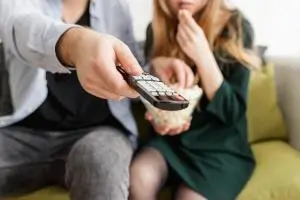Wireless power transfer (WPT) systems can remotely power up mobile devices or charge batteries in everyday household objects such as TV remote controllers, alarm sensors and smoke detectors, for example.
Such systems can contribute to the successful evolution of the Internet of Things (IoT), which involves the massive deployment of wireless sensors connecting a network of physical devices, vehicles, home appliances and other items embedded with electronics.
The focus of the COST Action ‘Wireless Power Transmission for Sustainable Electronics’ (WIPE) was on efficient WPT circuits, systems and strategies for battery-free systems.
Empowering women in science
Mariotti was a PhD candidate at the University of Perugia in Italy when the Action began and her research group participated. She says: “I was really excited by the fact that we were looking for very innovative solutions for the Internet of Things development by proposing unconventional materials for electronics and unconventional design approaches.”
Mariotti’s PhD research topic focused on the development and demonstration of additive manufacturing technologies for radio-frequency applications. Given the overlap with the focus of the COST Action, she was motivated to apply for a short-term scientific mission under the network.
“I got the grant to spend six weeks at Portugal’s University of Aveiro, in October 2014,” the 30-year-old explains. “ Then, in 2015, I won another grant for a short-term scientific mission to spend two months at Georgia Institute of Technology in the USA. Moreover, I applied for the ‘Women in Wireless Power Transfer’ in 2016 and was the recipient of the grant. This meant I was funded to participate in the Wireless Power Transfer Conference in Aveiro in 2016.” The Women in Wireless Power Transfer initiative was proposed by the COST Action to support young female researchers in emerging technology research fields.
In February 2016, Mariotti was awarded her PhD and is now working as a radio-frequency design and concept engineer at Infineon Technologies
Austria in Villach. “Overall, the COST Action was a very positive experience, and an opportunity that definitely helped me in my career,” she says.
Making connections
Professor Nuno Carvalho, Chair of the Action, is understandably upbeat about the team’s achievements.
“The Action has put Europe on the map – when we first started, most of the research was coming from Japan and the US,” he says. “We focused on combining communications with wireless power transmission – now many groups across Europe are working on this.”
The Action also made an important contribution to regulatory standards. Carvalho explains that researchers participating in the Action teamed up with Japanese counterparts to prove the case for using a dedicated charging frequency of 5.8 GHz for WPT. This advice was taken on-board by the International Telecommunication Union, a UN agency for coordinating ICT issues globally.
For Carvalho, the most rewarding part is the networking opportunities that the network provided: “The best thing is the people – when we brainstorm with others who have different backgrounds and different points of view, we can create new ideas together.”
He adds: “Here in Portugal, we estimate that we buy 20 million batteries every year just for TV remote controllers. Now imagine that you can recharge remotely – and get rid of the batteries.”

